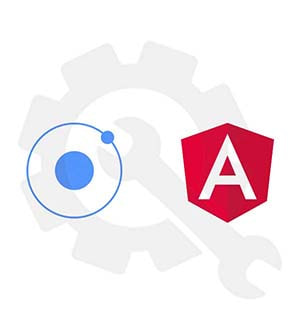|
Developing an application in Angular CLI is really fun and fast due to its nature and the features it offers to developers. One of the great features it has, is the ability to run your code using different variables. Similar to environmental variables that are distinguish per se. But what are the environment variables and what is the relation with the ionic? If you know what the environment variables are, or if you are impatient and you want just to see how to use the environment variables in an ionic app skipping the reading of the configuration explanation, scroll down to "In nutshell" section What are the environment variablesSay that you have an application that posts a form from the client to the server. You local server listens to http://localhost:3000. How can you set different server address on your UAT (User Acceptance Testing) or your Production environment? In your Angular project exists the directory src/environments which has the files:
The values of the variables are different per file. Per environment.
How can angular distinguish and select the correct environment? Simply, when you build your app with --prod option (ng build --prod) it selects the production environment. If you however build the app without specifying and option (ng build), it selects the default environment. Let's see how angular manages to do this separation. Be prepared to a deep dive to Angular's configuration. When we run the angular application with --prod option, we tell angular to use the production configuration which lives in angular.json file. part of angular.json
This content is the default configuration as it is auto generated I wont explain what the options such as "optimization", "outputHashing" etc do, but I will focus on "fileReplacements". The following quote is from angular-cli When you use your production configuration (via ng build --prod or ng build --configuration=production), the src/environments/environment.ts file will be replaced with src/environments/environment.prod.ts Notice the 6th line which has "src/environments/environment.prod.ts". This tells angular to use the environment.prod.ts file and in turn this file tells angular to run in production mode. Who uses this variable? The src/main.ts file which is the starting point of angular. Let's see the auto generated code part of main.ts
If the "environment.production" is true, then execute the "enableProdMode()". The interesting part here is that we don't see an import for environment.prod.ts but environment.ts instead. Nice, right? This is the chain of how the variables from "environment files" are being used. Similar to production variable, you can set your own variable names. As this post is not meant to fully explain how the environments in Angular CLI work, check this for more info The ionicAccording to ionic documentation, if we want to deploy our build to a device we have to write in the CLI the following If you run this and look closer at the console output, you will notice that it executes a Task from angular.json file. This task is the "ionic-cordova-build" Console output
This task is in the angular.json file. Let's see what it is all about The above is the configuration of the ionic-cordova-build task as seen in angular.json file.
From above we perceive that we can set our custom configurations. Let's go and add our options. We will add the configuration with name "dev" beneath production The dev configurationWe added the "dev" section which sets as handler the app:build:dev. Ohh boy!! We need to adjust more configuration options. In the same file(angular.json) we have to insert our dev configuration on the projects.app.architect.configurations. Notice that we are using here the environment.dev.ts (5th line). This means that we have to insert our variables on that file and use them somewhere in our code. For the shake of this post, we will add the variable "serverAddress" environment.dev.ts
And this is what you have to do in order to make use of the serverAddress variable in your code One more step and we are ready to go! We need to tell angular which configuration to use when building the app. The trick here is the option -c. This tells angular to use the dev configuration In nutshell
ConclusionUsing environment variables on your ionic app is very useful when you need to have different values per environment. You might have only two environments, the development and the production. Still, if you want to run your application and make use of the production variables, you will need to use the powerful feature of environment variables powered by angular-cli
Comments
|
AuthorI am an Angular GDE, content creator who loves sharing knowledge TagsAll Angular Angularjs General Graphql Ionic Javascript .net Nodejs Typescript |

